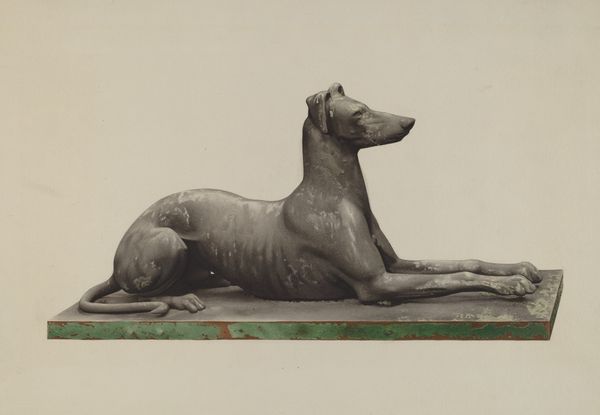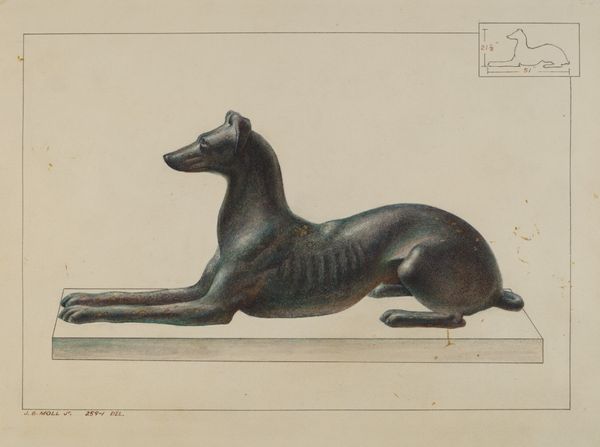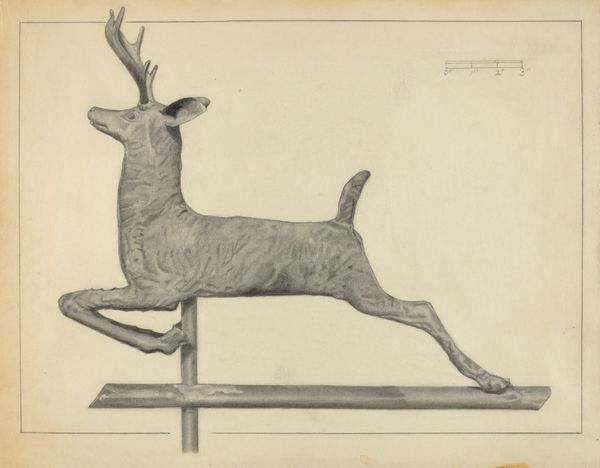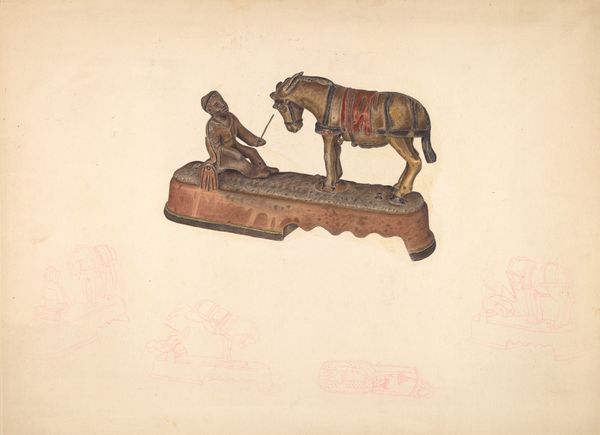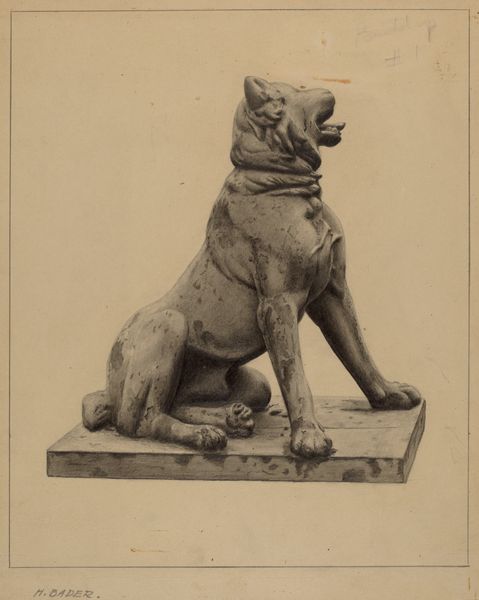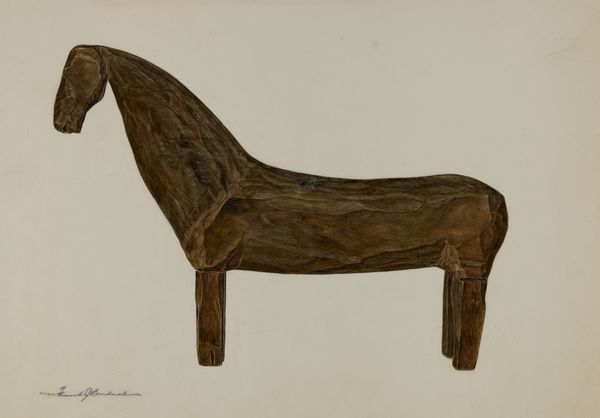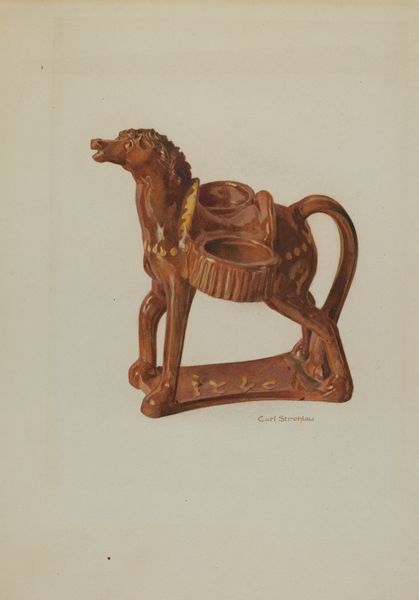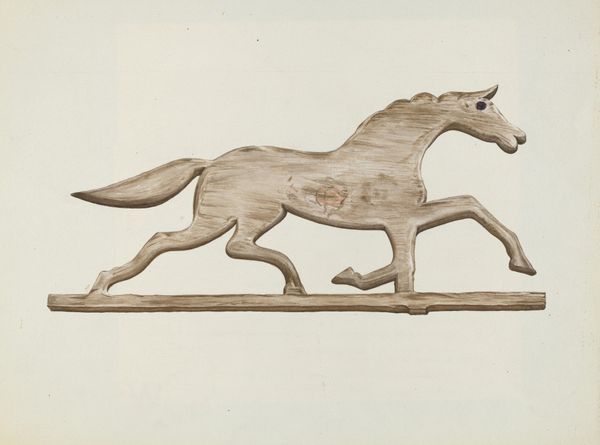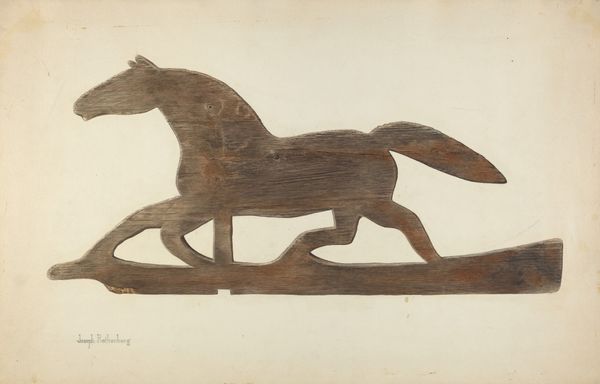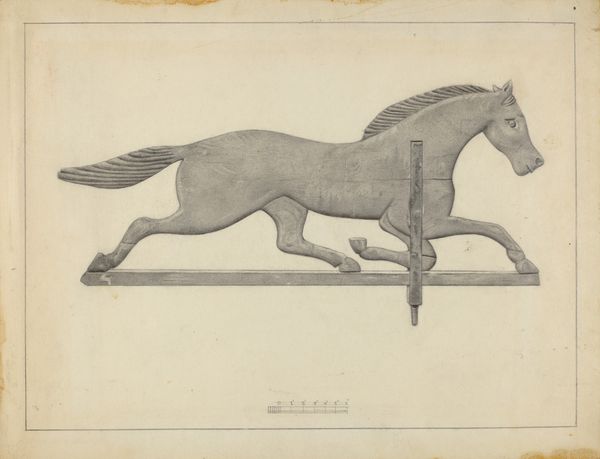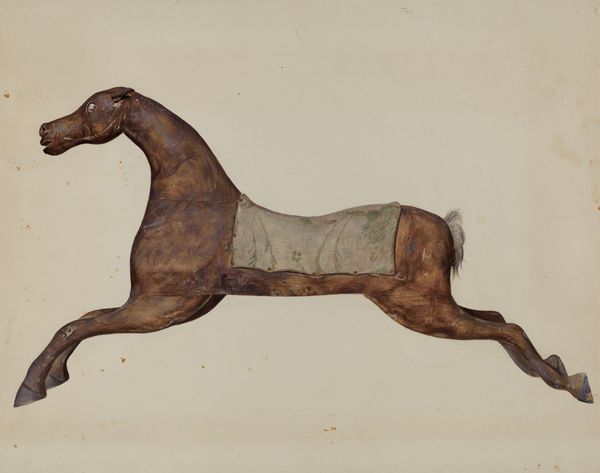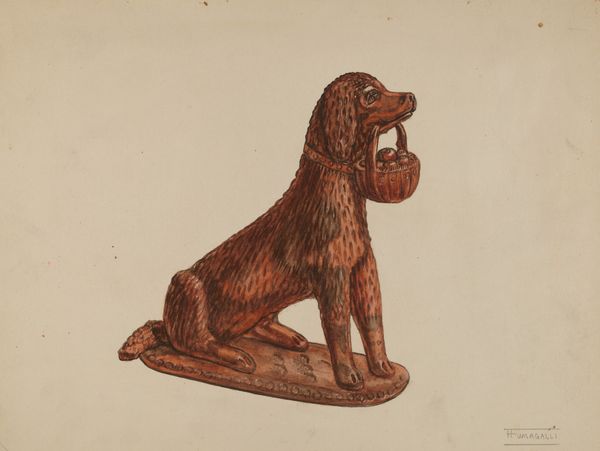
drawing, sculpture, pencil
#
drawing
#
sculpture
#
pencil
#
watercolor
#
realism
Dimensions: overall: 21.9 x 28.2 cm (8 5/8 x 11 1/8 in.) Original IAD Object: 37" long, 11 1/2" wide
Copyright: National Gallery of Art: CC0 1.0
Curator: Here we have Francis Law Durand's "Cast Iron Dog," estimated to have been made around 1937. It seems to be a sketch combining pencil and watercolor, likely a study for a sculpture. My first impression is that the composition emphasizes a sort of quiet dignity, perhaps tinged with melancholy, don’t you think? Editor: It’s interesting, though, because I’m immediately struck by the relationship between high and low. Here's a proposal, carefully rendered with shading to suggest volume, likely intended for the creation of a mass-produced object. Cast iron speaks of industry and repetition. There's something inherently democratic about the medium. Curator: True, the choice of cast iron does ground it in a specific social context. It speaks to industrial capacity and availability of materials, but let's look at the form itself. The pose is classic—almost sphinx-like, rigid symmetry and strong horizontal lines creating a feeling of stability. Note also that small plan up top in the upper left indicating the shape and layout as viewed from above! It is anything but casual. Editor: I agree, but I wonder if it also represents a subtle critique. During the 1930s, you had economic anxieties fueling all sorts of utopian designs and attempts to bring high art to the masses. An artwork like this could question the boundary between unique artistic expression and commodity production during the time. Are we creating art or are we creating capital? Curator: It's fascinating to consider it through that lens. Looking at the use of line, there’s a clarity that gives the dog a regal bearing and that the careful pencil drawing suggests a handcrafted aspect—that this object began as an intimate artistic act. This contrasts nicely with the eventual intent of using cast iron. It gives it this strange friction to the end use! Editor: That friction interests me most. I keep thinking of the labor involved: from Durand’s design to the foundry workers creating multiples, to the eventual consumers... even the aesthetic experience has layers of socio-economic involvement we sometimes like to gloss over, assuming the aesthetic appreciation is divorced from such concerns. Curator: It does invite one to reflect on all the different sets of hands—from creation to acquisition. I’ll have to ponder these connections. Editor: Indeed, I find myself more attuned to how an artist's idea evolves into an object within the gears of manufacturing and our economies of taste.
Comments
No comments
Be the first to comment and join the conversation on the ultimate creative platform.
